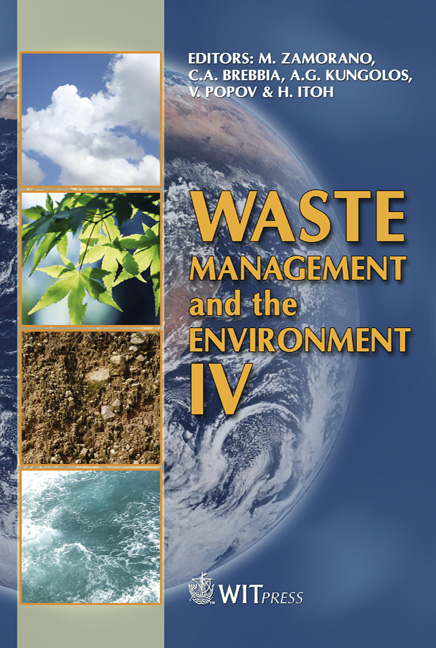Removal Of Copper, Nickel And Lead From Wastewater Using A Modified Cellulose Material: A Comparison
Price
Free (open access)
Transaction
Volume
109
Pages
10
Page Range
809 - 818
Published
2008
Size
363 kb
Paper DOI
10.2495/WM080821
Copyright
WIT Press
Author(s)
D. W. O'Connell, C. Birkinshaw & T. F. O’Dwyer
Abstract
Heavy metal waste streams from a variety of industrial sources pose a significant environmental threat to receiving waters. Significant research work has focused on the use of adsorbents and adsorption in the treatment and recovery of these metals from waste streams. This paper focuses specifically on the design of a novel adsorbent based on the naturally occurring material, cellulose and application of this novel material to the removal of selected heavy metals from waste streams. Cellulose material has limited heavy metal adsorbing capability. To enhance its sorption capacity, a sorbent material was prepared by firstly grafting glycidyl methacrylate monomer to cellulose. The grafted product was then functionalised by the addition of imidazole. The novel material was then assessed for its ability to adsorb the heavy metals Cu(II), Ni(II) and Pb(II). Uptake levels on the cellulose-g-GMA-imidazole material were 68 mg g-1 Cu(II), 45 mg g-1 Ni(II), 71 mg g-1 Pb(II). These uptake levels compared favourably with those achieved using other naturally occurring materials. The level of uptake of each metal on the modified cellulose material was found, in all cases, to be significantly influenced by aqueous pH. The optimum pH range in all cases ranged from approximately pH 4 to pH 5.5. The speed of uptake of each metal on the sorbent material ranged from approximately 40 minutes in the case of Cu(II) and Pb(II) to almost 400 minutes for Ni(II) depending on initial metal concentration in solution. The overall kinetics in each case is best described by the pseudo-second order approach. Almost complete recovery of each metal from the modified cellulose material was possible using a 0.1M acid solution; however, re-use of the sorbent materials in further adsorption cycles yielded variable outcomes. Keywords: wastewater, heavy metals, adsorption, modified cellulose.
Keywords
wastewater, heavy metals, adsorption, modified cellulose.





